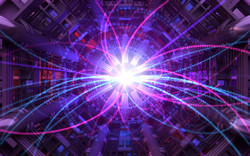Next-generation particle colliders for high-energy physics
CERN's Large Hadron Collider (LHC), the world's largest and most powerful particle accelerator, has contributed to several discoveries over the years, most notably a particle that gives mass to other particles. Physicists and engineers are exploring linear colliders as potential candidates for tomorrow's particle colliders for high-energy physics. These machines will allow particle physicists to explore a new energy region in the multi-teraelectronvolts (TeV) range, which is beyond the capabilities of the LHC. The EU-funded MECHANICS(opens in new window) (IAPP Mechanics - Marie Curie linking industry to CERN) project sought to study a concept for a machine to directly collide electrons with positrons at energies up to several TeV. Emphasis was on the Compact Linear Collider (CLIC), the most powerful high-energy particle collider in existence, and its potential to achieve these precision measurements and meet the requirements for the next high-energy machine. To enhance knowledge exchange in precision manufacturing, MECHANICS carried out 103 person-months of secondments and recruitment, in addition to dissemination workshops. It contributed to the manufacturing research and technology development of CLIC-enabling technologies. Work covered the manufacturing chain from design to assembly of the components. Researchers demonstrated how a multi-TeV CLIC can be built in a cost-efficient way. MECHANICS helped to advance the development and manufacturing of the many challenging CLIC components and structures. Ultimately, this will contribute to mass producing them economically and efficiently in the future.







